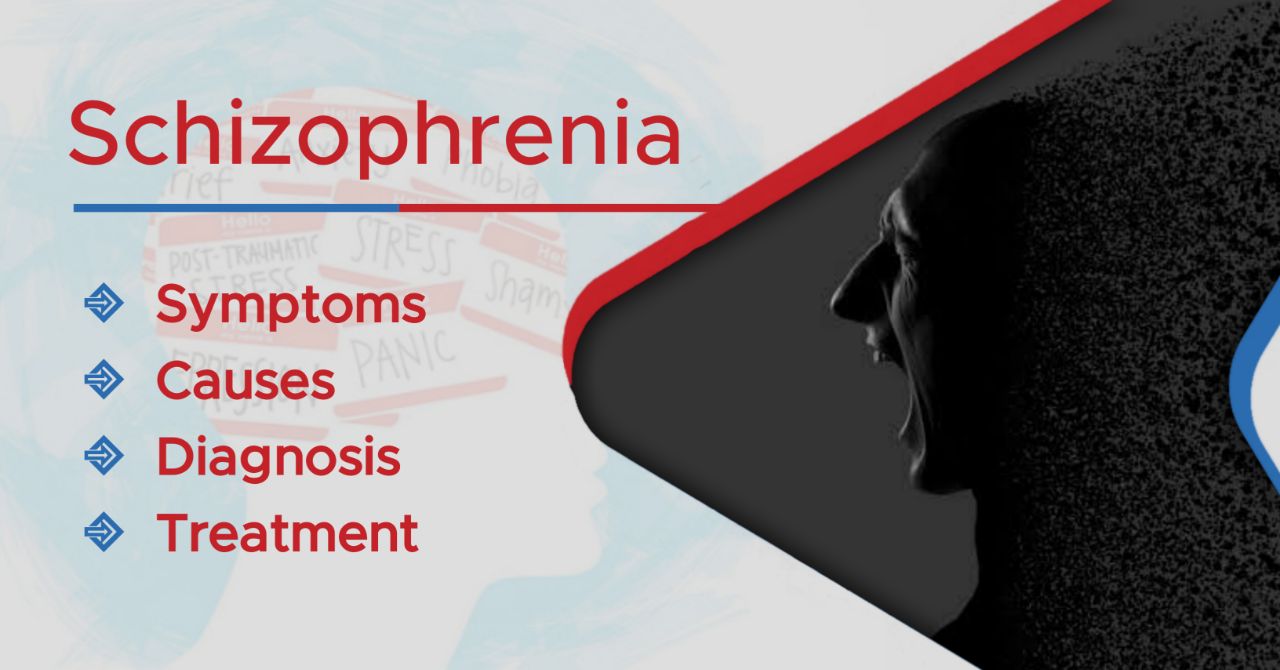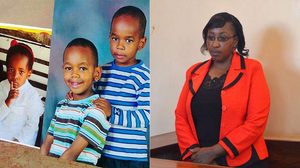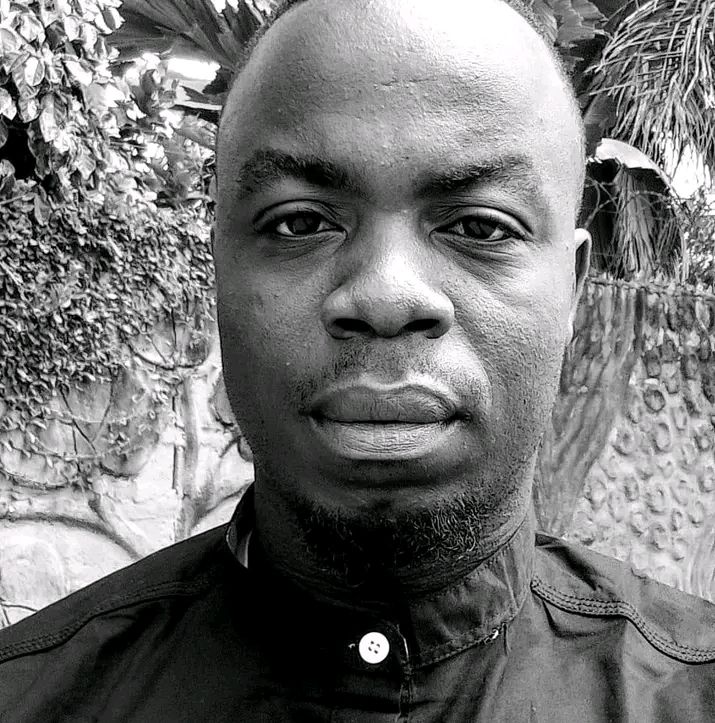
Schizophrenia
Reading Time: 8min
What is Schizophrenia?
Table of Contents
Schizophrenia is a serious and chronic mental health disorder that affects how a person thinks, feels, and behaves. It is a psychosis, meaning it can cause people to have difficulty distinguishing between what is real and what is not. While often misunderstood, it is a treatable medical condition of the brain.
The course of schizophrenia is unique to each individual, but it often involves cycles of acute episodes (where symptoms are severe) and periods of remission (where symptoms lessen or subside).
Key Symptoms: The Three Categories
Symptoms are typically divided into three main categories: positive, negative, and cognitive.
1. Positive Symptoms (Psychotic Symptoms):
These are "additions" to a person's reality—experiences and behaviors that are not present in people without the condition.
Hallucinations: Sensing things that are not there. The most common are auditory hallucinations (hearing voices), but they can also be visual, olfactory (smell), or tactile (touch).
Delusions: Fixed, false beliefs that are not based in reality and are not swayed by logical reasoning. Examples include paranoid delusions (belief that one is being persecuted), grandiose delusions (belief one has special powers), or referential delusions (belief that public messages are directed specifically at them).
Disorganized Thinking: Inferred from disorganized speech. A person may switch topics rapidly, give unrelated answers to questions, or their speech may be so jumbled it becomes incomprehensible ("word salad").
Grossly Disorganized or Abnormal Motor Behavior: This can range from childlike silliness to unpredictable agitation. It includes catatonia, a state of unresponsiveness and immobility.
2. Negative Symptoms:
These reflect a "loss" or "diminishment" of normal emotional and behavioral functioning. They are often more difficult to treat and can be mistaken for laziness or depression.
Avolition: A severe lack of motivation or initiative to accomplish tasks.
Anhedonia: The inability to experience pleasure from activities usually found enjoyable.
Flat Affect: A reduced expression of emotions via facial expression or voice tone.
Alogia: Reduced speech output or poverty of speech.
Asociality: A lack of interest in social interactions.
3. Cognitive Symptoms:
These involve problems with thought processes and are a major cause of disability.
Problems with Executive Functioning: Difficulty understanding information and using it to make decisions.
Trouble Focusing or Paying Attention.
Working Memory Problems: Difficulty using information immediately after learning it.
Causes and Risk Factors
The exact cause is unknown, but it is believed to be a complex interplay of genetic, brain chemistry, and environmental factors.
Genetics: Schizophrenia has a strong hereditary component. Having a first-degree relative with the disorder increases the risk.
Brain Chemistry and Structure: Imbalances in neurotransmitters like dopamine and glutamate are implicated. Brain imaging studies sometimes show subtle differences in brain structure.
Environmental Factors: Complications during pregnancy and birth (e.g., malnutrition, infections), advanced paternal age, and autoimmune diseases may increase risk.
Stress: Extreme stress can trigger the onset or relapse of symptoms in vulnerable individuals. Substance use, particularly cannabis in adolescence, is also a known risk factor.
Diagnosis and Treatment
There is no single test for schizophrenia. Diagnosis is made by a psychiatrist through a comprehensive clinical assessment, including interviews with the individual and family, and by ruling out other medical or substance-induced causes.
Treatment is lifelong and most effective when it involves a combination of:
Antipsychotic Medications:
These are the cornerstone of treatment, helping to manage the positive symptoms by affecting brain chemistry.
They are categorized as typical (first-generation) or atypical (second-generation), with the latter having fewer neurological side effects.
Finding the right medication and dosage is a collaborative process between the patient and doctor.
Psychosocial Therapies:
Cognitive Behavioral Therapy (CBT): Can help manage symptoms by challenging and changing unhelpful thoughts and behaviors.
Social Skills Training: Focuses on improving communication and social interactions.
Family Therapy: Educates and supports families, creating a better recovery environment.
Supported Employment: Helps individuals find and maintain jobs.
Coordinated Specialty Care (CSC):
This is a recovery-oriented, team-based approach for first-episode psychosis that combines medication, psychotherapy, case management, and family involvement.
Myths vs. Facts
Myth: People with schizophrenia have a "split personality" or Jekyll and Hyde syndrome.
Fact: This is a common and harmful misconception. Schizophrenia is a psychosis, not Dissociative Identity Disorder (DID). The "split" is from reality, not within the personality.
Myth: People with schizophrenia are violent and dangerous.
Fact: They are far more likely to be victims of violence than perpetrators. Paranoia and isolation can increase this risk. Substance abuse is a major confounding factor. With treatment, the risk of violence is not greater than in the general population.
Myth: Schizophrenia is a life sentence of institutionalization.
Fact: With modern treatment, many people with schizophrenia can lead fulfilling, independent, and productive lives. Recovery is a realistic goal.
How to Help Someone with Schizophrenia
Educate Yourself: Understanding the disorder reduces fear and stigma.
Listen Without Judgment: Acknowledge their experience without reinforcing delusions.
Encourage and Support Treatment: Help them stick with their medication and therapy plans.
Focus on Strengths and Goals: See the person beyond their illness.
Pay Attention to Crises: Know the signs of an impending relapse (increased paranoia, isolation, etc.) and have a crisis plan.
Take Care of Yourself: Supporting a loved one can be challenging; seek your own support.
Understanding Schizophrenia Care in Kenya
Schizophrenia is a serious mental health condition, but with consistent treatment, individuals can manage their symptoms and lead stable lives. In Kenya, care is primarily provided through the public health system at referral hospitals and through private mental health facilities. The main challenges are often stigma, cost, and access to consistent follow-up care.
Key Kenyan Healthcare Providers
Public Health Facilities (More Affordable)
Mathari National Teaching and Referral Hospital
Role: This is the only public psychiatric referral hospital in Kenya. It serves as the central facility for severe and complex mental health cases, including schizophrenia.
Services: Inpatient and outpatient care, medication, and basic psychosocial support.
Considerations: While it is a crucial resource, it can be overstretched. Wait times may be long, and the environment is often more basic than private options. It is best accessed through a referral from a county hospital.
Kenyatta National Hospital (KNH) - Department of Mental Health
Role: As the largest public referral hospital, its mental health department provides psychiatric services.
Services: Outpatient clinics, inpatient wards, and specialist reviews. You can see a psychiatrist here for diagnosis, medication management, and follow-up.
County and Sub-County Hospitals
Role: Many larger county hospitals (e.g., Moi Teaching and Referral Hospital in Eldoret, Coast General Hospital in Mombasa) have psychiatric units or visiting psychiatrists.
Services: This is often the first point of contact for many Kenyans. They provide initial assessment, prescribe medication, and manage stable cases, referring more complex cases to Mathari or KNH.
Private Health Facilities (Often Faster Access, Higher Cost)
The Chiromo Hospital Group (CGHD)
Role: A leading private mental health service provider in East Africa.
Services: Comprehensive psychiatric assessment, diagnosis, medication management, and some therapy. They offer both inpatient and outpatient services and are a primary choice for those with private insurance.
Aga Khan University Hospital, Nairobi
Role: A major private teaching hospital with a robust Department of Psychiatry.
Services: Specialist psychiatric care, including the management of psychotic disorders like schizophrenia.
Community-Based and Support Organizations
Basic Needs UK in Kenya (Now part of Humanity & Inclusion)
Role: This organization has been instrumental in pioneering community-based mental health work in Kenya.
Services: They work with local partners to support people with mental health conditions through community self-help groups, livelihood support, and training for community health workers. This is a vital resource for ongoing psychosocial support and reducing stigma.
The Psychiatric Disability Organization (PDO Kenya)
Role: A user-led organization based in Nakuru, meaning it is run by and for people with lived experience of mental health conditions.
Services: Advocacy, peer support, and community outreach. They understand the challenges firsthand and can provide invaluable support and guidance.
The Treatment Model for Schizophrenia in Kenya
Effective management typically involves:
Medication (Antipsychotics): The cornerstone of treatment. Available in public and private pharmacies, though consistent access can be a financial challenge.
Psychosocial Support: Crucial for recovery. This includes:
Family Therapy and Education: Educating families on how to support their loved one is one of the most effective interventions.
Community Support Groups: Organizations like PDO Kenya and Basic Needs facilitate these.
Occupational Therapy: Available in some larger hospitals to help with daily living skills.
How to Find Help: A Step-by-Step Guide
Start at a Local Health Centre: For a public pathway, begin at a local health centre or county hospital. They can assess and refer you to a higher-level facility if needed.
Contact a Private Facility Directly: For faster access, contact Chiromo or Aga Khan directly to book a psychiatric evaluation.
Join a Support Network: Reach out to PDO Kenya or inquire about community groups run by Basic Needs/Humanity & Inclusion. Peer support is powerful.
In a Crisis: If a person is a danger to themselves or others and refuses help, you can contact the mental health department at a public referral hospital (like Mathari or KNH) for guidance on emergency admission procedures.
Important Considerations in Kenya
Stigma: Stigma against mental illness, particularly severe conditions like schizophrenia, is significant. Education for the family and community is a critical part of care.
Cost and Medication Adherence: The biggest reason for relapse is stopping medication. Ensuring a sustainable plan for accessing monthly medication is essential.
Family Role: The family is often the primary support system. Involving them in treatment plans greatly improves outcomes.









